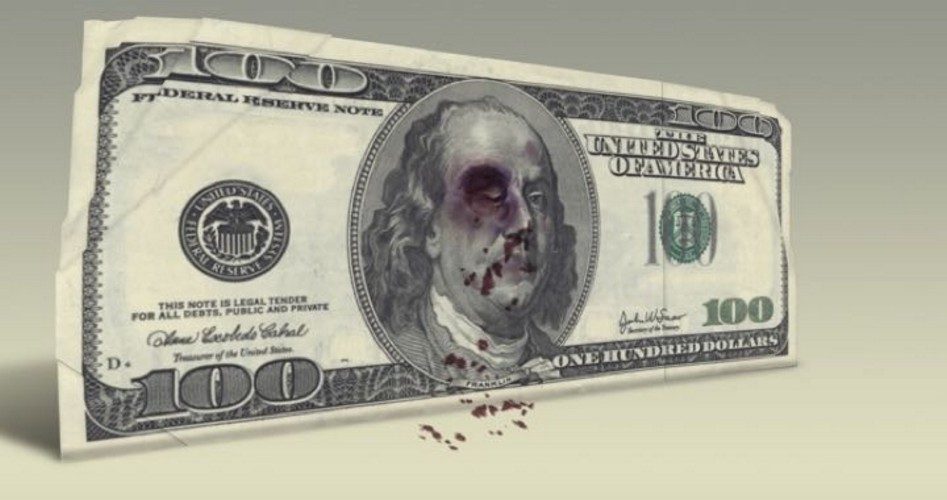
The national debt clock just clicked over $22 trillion. But according to the latest report from the Congressional Budget Office (CBO), wait ‘til 2029! That clock will be approaching $36 trillion. And that’s under the assumption that laws now in place stay in place. Add in the Green New Deal and the clock will have to add another digit: $100 trillion.
But not to worry. The new math — Modern Monetary Theory — will take care of everything.
Behind the headlines, the CBO adds details, clarifying who has loaned the $20 trillion to the federal government. Seventy-three percent has been loaned by private investors, bond mutual funds, and pension plans seeking “safety and security.” The rest was loaned to the U.S. Treasury by agencies of the federal government — they’re called intra-governmental loans — such as spending the FICA payroll taxes that come into Social Security in exchange for special government bonds. Today the public owns $16.1 trillion of the federal government’s $20 trillion debt. By fiscal year 2029, 11 years from now, the public will have loaned the government nearly $29T, an increase of more than 80 percent.
The authors of the report issued the usual warnings: “Such a high and rising debt would have significant consequences, both for the economy and for the federal budget.… As interest rates continue to rise toward more typical levels, federal spending on interest payments would increase substantially. Because federal borrowing reduces national savings over time, the nation’s capital stock ultimately would be smaller, and productivity and total wages would be lower.”
There also the increasing risk that the “public” might not be so willing to loan money to the government unless they received much more than “typical” interest rates:
The likelihood of a fiscal crisis in the United States would increase. Specifically, the risk would rise of investors’ being unwilling to finance the government’s borrowing unless they were compensated with very high interest rates. If that occurred, interest rates on federal debt would rise suddenly and sharply relative to rates of return on other assets.
The usual suspects are blamed for the skyrocketing deficits, adding to the national debt: the aging of the population (and its demand for entitlements), the rising costs of healthcare for the elderly, along with rising interest payments.
Under the assumption that “existing laws governing taxes and spending generally remain unchanged,” the CBO concludes that the extraction of capital from the private market will slow the economy drastically. It forecasts annual growth rates of less than two percent a year as the debt burden on the economy continues to grow.
If Alexandria Ocasio-Cortez and friends, including Senator Elizabeth Warren (D-Mass.), have their way, the Green New Deal will add another $6.6 trillion in annual spending. If Noah Smith, who calculated that number for Bloomberg, is correct, in 11 years that will bring the national debt from $36 trillion to $108 trillion.
But, thanks to MMT, the only technical difficulty will be having to add another digit to the national debt clock. According to that new theory of money (reviewed here), politicians must be “prepared to unleash the enormous power of the public purse [in order] to save the planet.” Stephanie Kelton, the godmother of the new theory, says concerns over deficits and the national debt aren’t relevant any more: “We must change the way we think about the federal budget. We must give up our obsession with trying to ‘pay for’ everything with new revenue or spending cuts.”
Presented by Kelton in terms that only liberal economists can appreciate, the theory boils down to this: unlimited issuance of U.S. Treasury bills until the saving of the planet is complete.
Simply put, the new MMT rejects Margaret Thatcher’s claim that “the problem with socialism is that you eventually run out of other peoples’ money.” MMT says this isn’t true if you own the printing press.
As Smith notes:
The Green New Deal will be paid for with soaring deficits, which could be quite dangerous. The plan’s environmental spending proposals would be temporary, but the new entitlement programs would be permanent.
If MMT is wrong, and if ever-expanding deficits cause runaway inflation, the result would be a devastating collapse of the nation’s economy. Hyperinflation has never happened in the U.S., but then again, neither has anything like the Green New Deal.
Even if the Green New Deal never sees the light of day, the CBO predicts that taxpayers will still see the national debt grow beyond “anything like” its present towering $20 trillion.
Photo: bestdesigns / iStock / Getty Images Plus
An Ivy League graduate and former investment advisor, Bob is a regular contributor to The New American blog primarily on economics and politics. He can be reached at [email protected].



